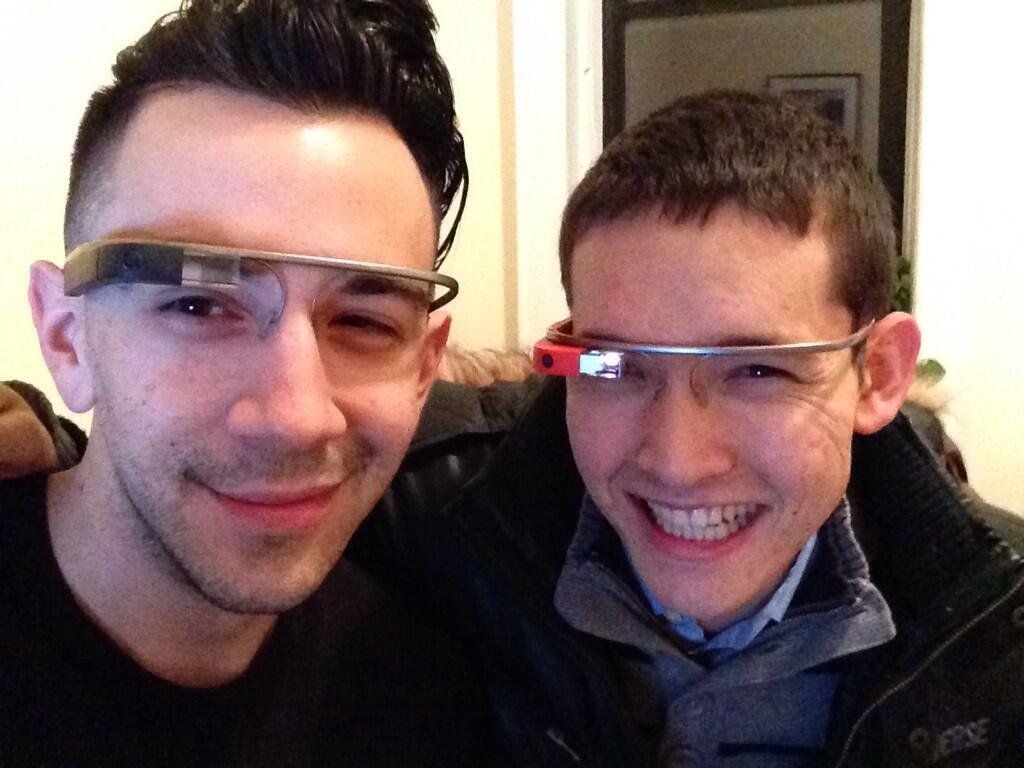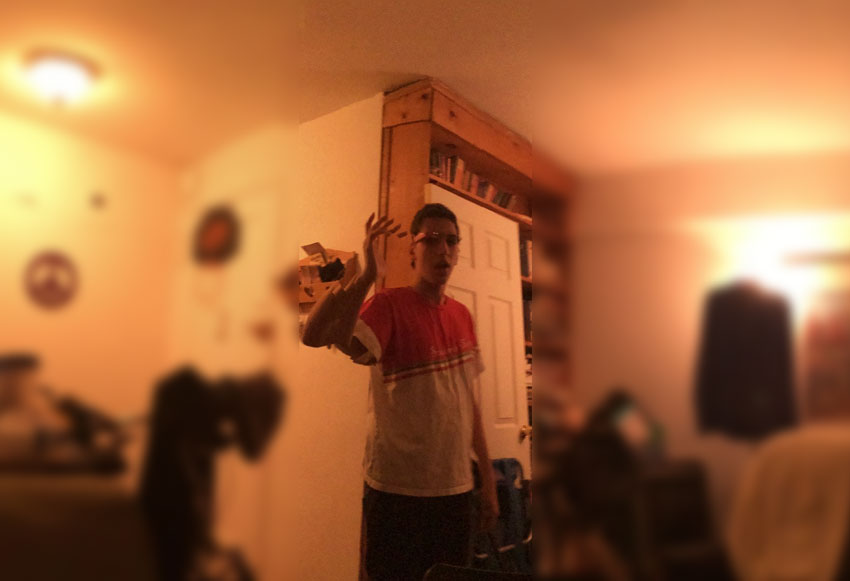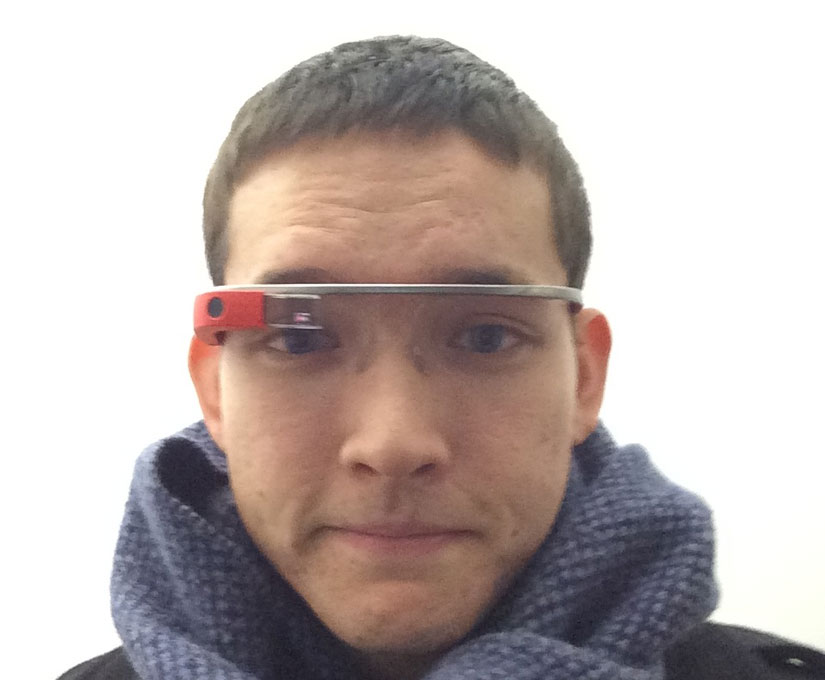One of the more interesting conversations I had recently was with a b2b sales director, who could clearly articulate the before and after changes from Covid. In short, companies account non-trivial budgets to send reps to in-person events, trade shows, and conferences, knowing there are unattributable affects for these costs. The side channel interactions between conference talks or the face time with in-person attendees is crucial for most sales pipelines.
Using a framework that I was introduced to by Daniel, from Pioneer, these events and their impact could fall into a two axis map of attributable results and costs. This means, there are results that are not attributable to a cause or are attributable. And similarly there are actions that are costly to take or not costly. Between these two axis’ you can have sales channels that are expensive and attributable, expensive and not-attributable, not expensive and attributable, and not expensive and not-attributable.
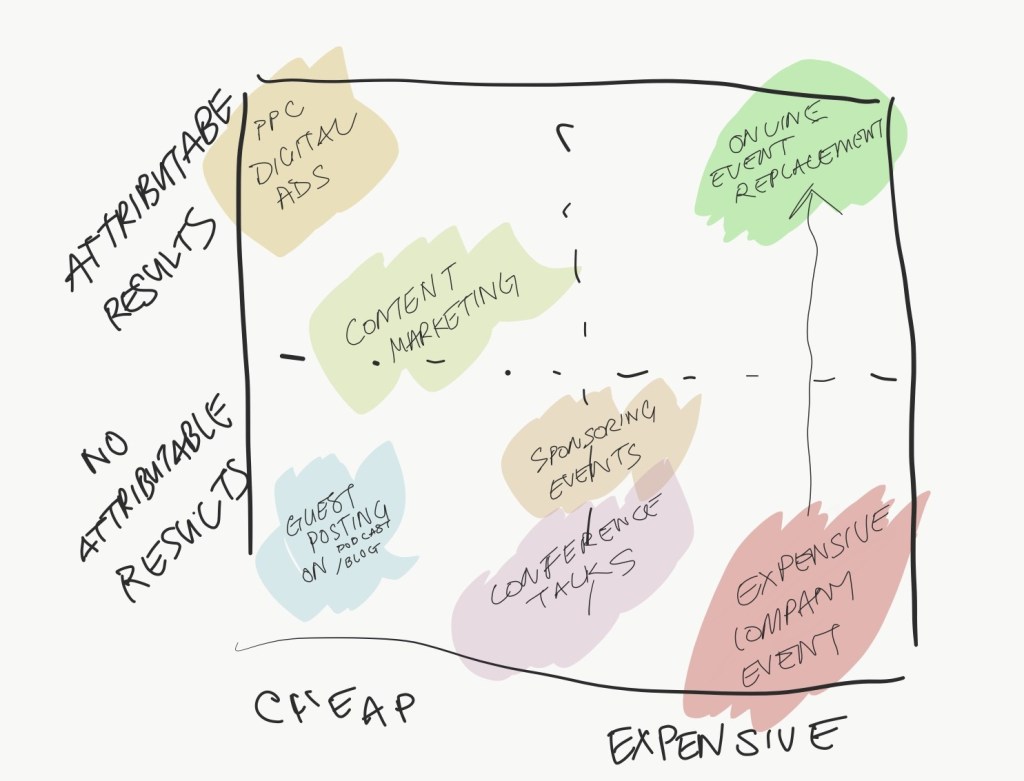
As noted from the sales side, most efforts to generate leads are not attributable to specific actions, and costly. In other words, sending a sales rep to speak at a conference or signing up for a booth at a trade show are both costly, dont generate leads or sales at a normal cost per acquisition. The intangible benefits, such as exposure and branding are the justified reasons for spending money.
Outside of the individual sales rep perspective, a company’s yearly multimillion dollar event may be held at a huge cost and have relatively little attributable sales impact. While an event can give a slight sales bump, when compared to no event at all, it in no way justifies the huge cost for organizing the event. Think Saleforce’s Dreamforce or Google’s SPAN.
A few other examples of expensive not-attributable actions could be in the recruiting space. Engineering teams may sponsor large events or send employees to attend conferences for recruiting purposes, but don’t actually return with concrete recruiting leads. Again, there are often more benefits that are intangible, such as employee satisfaction, but the point is clear.
Due to the major shift from Covid of in-person events going digital, companies are paying closer attention to costs and attributable results. The digital event equivalents with attributable outcomes will be harder to justify with large costs in the future. If a $4 million event gave a 30% sales boost, but a $300,000 digital event can create a 20% equivalent boost, then the outstanding costs for the in-person event wont be returning immediately. Is the remaining 10% worth $3,700,000? No.

As many more events are moving online, a far greater number of previously in-person events will likely stay online. Considering the ratio of online event invites to registrations and actual attendees are continuing to shrink, the need refine the surface area of online events is becoming more important. A similar email invite and zoom link isn’t sufficient. The event speakers, email reminders, in-event promotion, post-event follow up, and summary resources are more important than ever.
One great write up Ross shared with me was on the webinar industry trends and the reception of the “Cambrian explosion” of digital events. (I had to do it)
You can find that here: https://www.trustradius.com/vendor-blog/the-impact-of-covid-19-on-digital-events
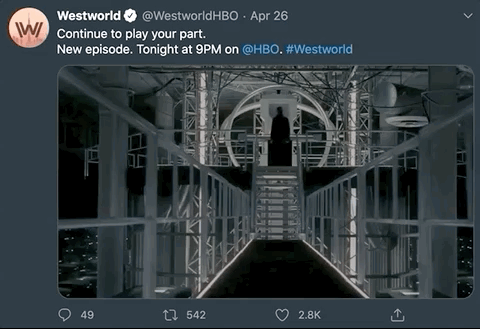
Hmm…which one should I attend?

Companies holding online events are now competing with the newest HBO hit-series release, but have much less to offer. Considering the competition, tools that help companies do promote, run and engage audiences for online events better are more important than ever. As we saw over the last few years that companies went from refined writing techniques over clearly defined visual brand guidelines. Now that well laid out photos and visual styles are not enough, companies are hiring in-house video producers to manage livestreams, tutorial content, and editing recorded events.
Video tools used to be generic timeline editors, like Final Cut or Adobe Premiere, but the consumer tools such as TikTok and livestream tools for the likes of Twitch are revealing the potential for improvement. How many webinars are using OBS to engage their audiences? As new demands are set for quality video content, the tooling will continue to evolve and become more niche.
As the events that were previously in-person move online, I expect a lot more companies to appear in this space.
